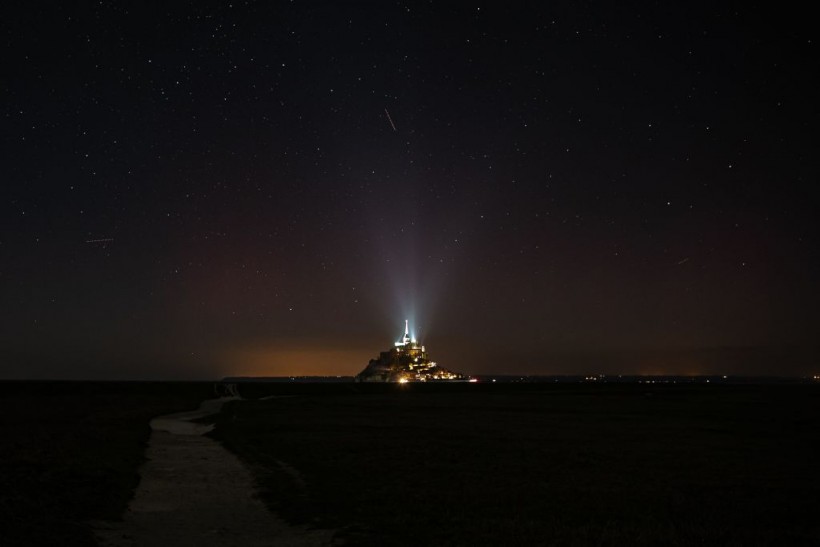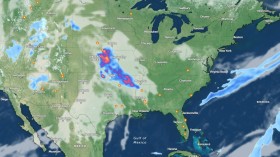The National Weather Service (NWS) reported that several coral mass ejections (CMEs) were reported. A Geomagnetic Storm Watch is present this Friday, bringing potential bright Aurora lights to the Northern US.
The bright Auroras can be visible in parts of Oregon and Illinois. The Northern lights can showcase colorful skies. According to the reports, CMEs were detected on November and 28.
Meanwhile, the weather in the US will likely bring widespread cold and freezing rain. In the West, the atmospheric river will help with the rounds of rain and snow in the region.
In this late week, Americans can expect travel concerns due to the weather. Slippery roads and foggy conditions are possible due to the weather. In Oregon, the chilly weather outlook and snow can unload.
Strong Geomagnetic Storm and Bright Aurora Lights

Aurora borealis (Northern Lights). A Geomagnetic Storm Watch has been issued due to several coronal mass ejections (CMEs), bringing potential Aurora lights to the Northern US. The Auroras can be visible in parts of Illinois and Oregon.The recent reports explained that the fourth CME caused the G2 watch, which showed a full halo. The space weather in NOAA is monitoring the developments of solar storms and impacts on Earth.
According to the NWS advisory, the coronal mass ejections will bring the potential Auroras in the Northern US, especially in Illinois and Oregon. A G2 to G3-level geomagnetic storm watch is issued on Friday.
The recent reports explained that the fourth CME caused the G2 watch, which showed a full halo. The space weather in NOAA is monitoring the developments of solar storms and impacts on Earth.
The NOAA Satellites reported that the flare resulted in radio blackouts on the side of Earth. The Space Weather explained that 3 CMEs showed already inbound.
Furthermore, the fast-moving CME can emerge on Earth on December 1. People should watch out for G3 levels. Meanwhile, the bright Aurora can be noticeable in parts of Nebraska and Iowa on a Thursday night.
A strong magnetic storm can affect the frequency of radio navigation and satellites. The stargazing will be best in the following areas: Seattle, Boise, Bismarck, Winnipeg, Valentine, Chicago, Rochester, Caribou and Marquette.
According to NOAA, the said storm can likely arrive on Earth in several days or 18 hours.
Also Read: NWS Weather Forecast: Wintry Mix Outlook to Hit Interior Northeast, Central Plains This Week
Viewing Aurora: Tips in the Best View
When the geomagnetic storm makes an impact, it can likely cause the view of Aurora in the Northern States of the US. It is also a much-awaited event for people looking for Northern Lights.
The best time to view is during the night, around 10:00 pm and 2:00 am. It will allow viewers to enjoy the Auroras when they are very active. People should monitor the weather and clouds before sighting the Northern Lights.
In addition, keeping a mobile camera or telescope will help capture the amazing sightings of Auroras.
Related Article: December Weather Forecast: Atmospheric River To Bring Heavy Snow, Rain to Northwest Next Week
For more similar stories, don't forget to follow Nature World News
© 2024 NatureWorldNews.com All rights reserved. Do not reproduce without permission.

![Tsunami Hazard Zones: New US Map Shows Places at Risk of Flooding and Tsunamis Amid Rising Sea Levels [NOAA]](https://1471793142.rsc.cdn77.org/data/thumbs/full/70325/280/157/50/40/tsunami-hazard-zones-new-us-map-shows-places-at-risk-of-flooding-and-tsunamis-amid-rising-sea-levels-noaa.jpg)



